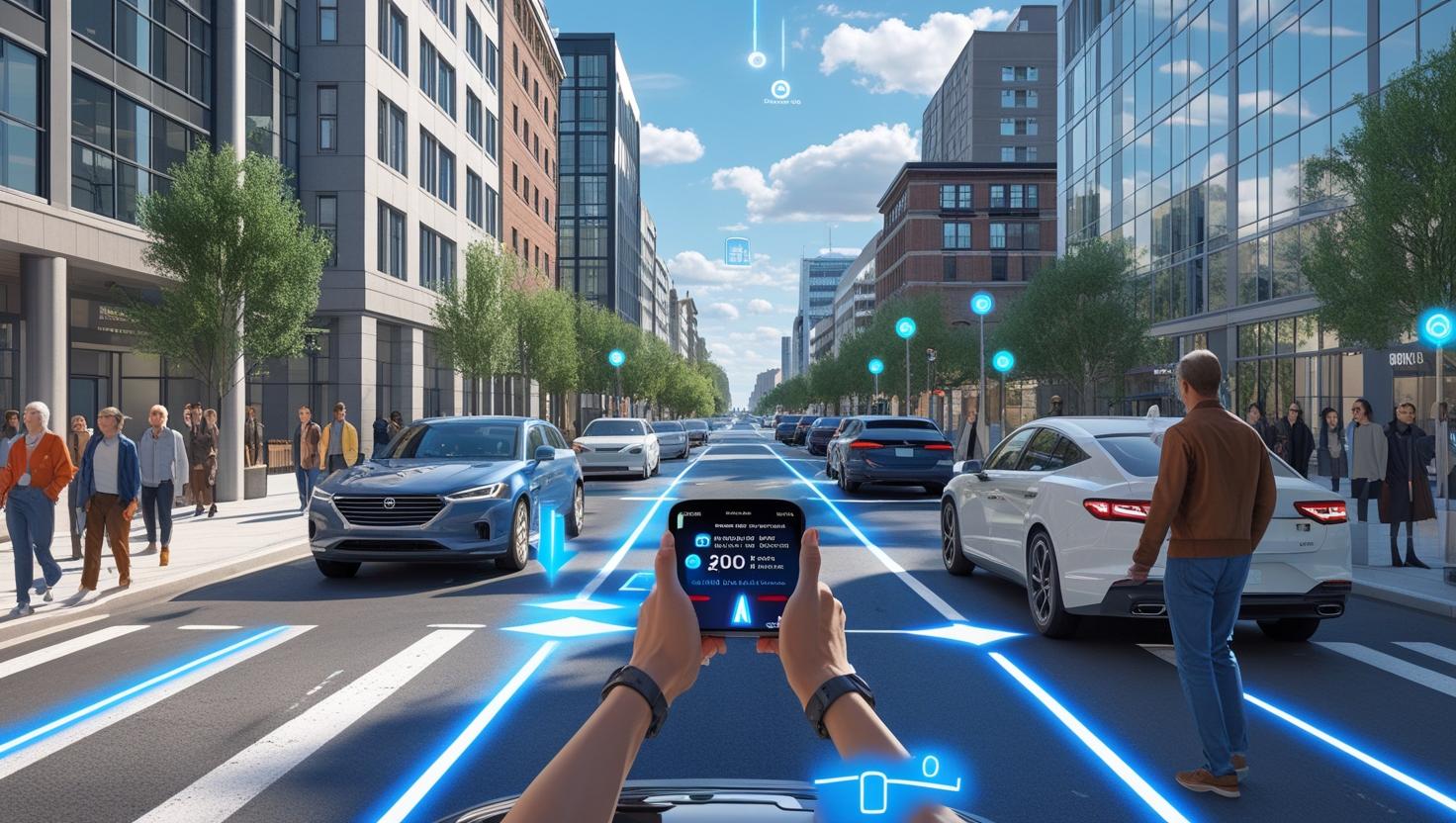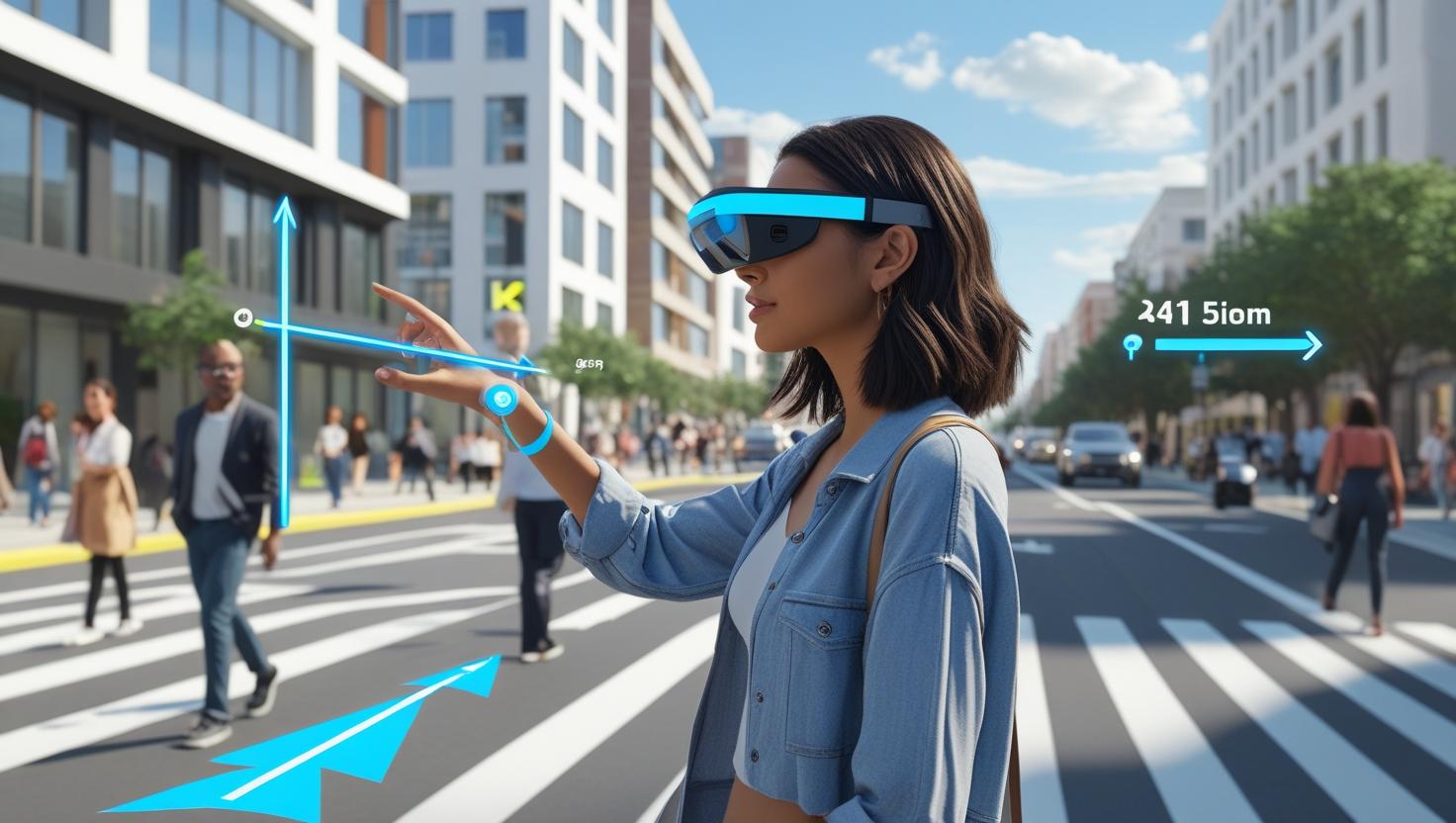The convergence of Augmented Reality (AR) and Global Positioning System (GPS) technologies is rapidly transforming how humans perceive and interact with the real world. What once seemed like a futuristic concept—digital overlays on the physical environment—is now becoming a core component of spatial computing, with AR GPS poised to disrupt industries ranging from automotive and tourism to logistics and retail.

Technological Advancements Powering the Market
The AR GPS market is advancing on multiple fronts, driven by improvements in hardware, software, and infrastructure. One of the most significant enablers is the development of high-precision GPS solutions. With support from technologies like multi-constellation GNSS (Global Navigation Satellite Systems), Real-Time Kinematic (RTK) corrections, and 5G low-latency networks, location tracking has become far more accurate, with precision reaching down to the centimeter level. This level of detail is essential for AR applications that require exact alignment with the physical environment.
Simultaneously, advancements in artificial intelligence (AI) and computer vision are enhancing the contextual understanding of physical spaces. AR GPS systems can now identify buildings, landmarks, terrain, and human activity to provide smarter overlays. This allows for features like dynamic point-of-interest labeling, real-time crowd analysis, and pedestrian-aware navigation. The integration of deep learning models is particularly impactful, enabling continuous improvement in spatial recognition and prediction.
On the hardware side, AR is no longer limited to specialized headsets. AR-capable smartphones, tablets, and emerging AR wearables like smart glasses are making these experiences more accessible to consumers and field workers alike. These devices can process real-time spatial data locally, supported by cloud and edge computing systems that offload complex computations and synchronize data across platforms. This distributed processing model ensures that AR GPS applications are both fast and scalable.
Download PDF Brochure @ https://www.marketsandmarkets.com/pdfdownloadNew.asp?id=150009689
Key Industry Applications of AR GPS
AR GPS is finding its footing across a wide range of industries, each leveraging the technology in unique ways to improve user experience, safety, and operational efficiency.
In the automotive and mobility sector, AR GPS is revolutionizing how drivers interact with their surroundings. Heads-up displays (HUDs) that project navigation prompts directly onto the windshield are already in production, providing intuitive and distraction-free driving guidance. As vehicles become increasingly autonomous, AR GPS will provide an added layer of situational awareness for both the system and the passengers, helping interpret road signs, hazards, and dynamic traffic conditions.
Smart cities are another prime beneficiary of AR GPS innovation. Municipal governments and infrastructure providers are using the technology to support wayfinding systems in complex environments such as airports, public transport hubs, and urban centers. City planners can visualize future development projects through AR-enabled digital twins, offering stakeholders a realistic preview of proposed infrastructure in its actual environment.
In the tourism and retail industries, AR GPS is enhancing customer engagement through immersive experiences. Tourists can use AR-guided apps to explore cities with historical context, 3D reconstructions of ancient landmarks, or even gamified tours. In retail, AR navigation helps shoppers find products in large malls or stores and delivers personalized advertisements or offers based on location and preferences.
The logistics and warehousing sector is also beginning to adopt AR GPS, particularly for last-mile delivery optimization and indoor-outdoor tracking. Workers can be guided through complex fulfillment centers with visual cues, while delivery drivers receive enhanced spatial instructions that reduce errors and improve efficiency.

Market Growth and Regional Trends
This growth is attributed to increasing demand for real-time location-based services, improvements in AR hardware and software, and broader access to high-speed wireless connectivity.
North America currently leads the market due to strong investments in mobility, defense, and consumer electronics. The U.S. is home to several major AR GPS innovators, particularly in the automotive and tech sectors. Asia-Pacific follows closely, with countries like China, Japan, and South Korea investing heavily in smart city infrastructure and 5G deployment. Europe, while slightly slower in consumer adoption, is rapidly advancing AR GPS integration into its manufacturing, logistics, and tourism ecosystems.
Future Prospects and Innovation Frontiers
Looking ahead, the AR GPS industry is poised to become a foundational layer of the spatial web—an emerging digital infrastructure that blends physical and virtual worlds. One of the most exciting future directions is the integration with digital twins, where real-world environments are replicated in virtual space with real-time synchronization. This allows for advanced simulation, predictive maintenance, and remote collaboration across sectors such as construction, utilities, and public safety.
Another promising area is drone-based AR navigation, which is expected to transform aerial surveying, agriculture, disaster response, and logistics. With GPS-guided flight paths enhanced by AR overlays, drones will be able to navigate and interact with complex environments more autonomously and intelligently.
As wearable AR devices become more compact, affordable, and powerful, AR GPS will transition from being a supplemental tool to a core interaction method in daily life. From walking tours and industrial maintenance to emergency response and education, the convergence of AR and GPS will change how we perceive, interact with, and move through space.
Generative AI is also expected to enhance AR GPS applications by generating synthetic environments or augmenting real-world objects with dynamic, AI-driven content. Coupled with natural language processing (NLP), users will be able to engage with AR navigation systems using conversational interfaces, further humanizing the technology.
The AR GPS market is no longer a niche segment of geospatial technology—it is becoming a strategic enabler of digital transformation across physical industries. As technology continues to mature, and as user expectations grow, AR GPS will evolve from a navigation aid into a context-aware intelligence system that makes the real world more accessible, interactive, and meaningful.
From helping us explore ancient ruins to guiding autonomous vehicles, the future of AR GPS is not just about finding directions—it’s about creating immersive, informed, and intuitive experiences in the world around us.
AR GPS Market – Frequently Asked Questions (FAQ)
1. What is AR GPS?
AR GPS (Augmented Reality Global Positioning System) combines augmented reality technology with location-based services. It overlays digital information (such as directions, labels, or data) onto the physical world in real time, based on the user’s GPS location and device orientation. This creates immersive navigation, mapping, and spatial interaction experiences.
2. How is AR GPS different from traditional GPS or mapping systems?
Traditional GPS systems offer 2D maps and textual or voice-based directions. AR GPS enhances this by placing visual instructions and real-time information directly into the user’s field of view—typically through smartphones, tablets, or AR glasses. It makes navigation more intuitive and context-aware.
3. What are the key components of AR GPS technology?
AR GPS systems typically include:
-
GPS/GNSS receiver for location tracking
-
IMU (Inertial Measurement Unit) for device orientation
-
Camera and computer vision to understand surroundings
-
AR software engine for rendering digital overlays
-
Cloud/edge computing for data processing and syncing
4. Which industries are using AR GPS today?
AR GPS is being adopted across:
-
Automotive and mobility (AR navigation in vehicles)
-
Tourism and travel (guided AR tours, location-based storytelling)
-
Retail and malls (in-store navigation, targeted advertising)
-
Smart cities (wayfinding, infrastructure planning)
-
Logistics and warehouses (AR routing, asset tracking)
-
Gaming (location-based AR games like Pokémon GO)
5. What are the key benefits of AR GPS?
-
Improved navigation accuracy with visual, real-time cues
-
Enhanced user experience through immersive content
-
Better spatial awareness for drivers, pedestrians, and workers
-
New engagement models in tourism, retail, and entertainment
-
Operational efficiency in logistics, warehousing, and maintenance
